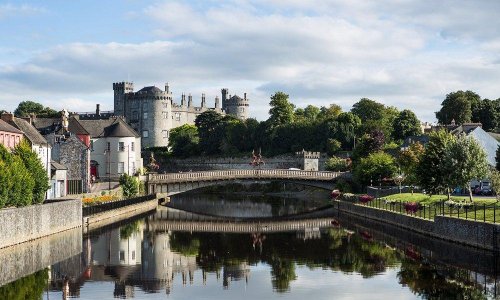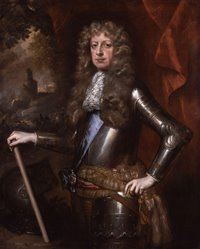Welcome back to our Memory Lanes series where we will be taking a trip down memory lane through a number of weird and wonderful towns and streets throughout Ireland.
For this instalment of the series, we shall be hopping on the Dublin-Galway train at Ceannt Station and exiting at Athlone. I will then be hopping on the 73 bus bound for Waterford which I will be exiting a this weeks destination; Kilkenny.

Given how charming and picturesque the thoroughfares of this town are to the naked eye, it is no surprise that it has become a firm day-trip destination among tourists primarily visiting Dublin. Be it browsing the quaint shops and cosy cafés, enjoying an extradordinary dining experience in a Michelin star restaurant or admiring the ornate features inside the magnificent Kilkenny Cathedral, the “Marble City” has something for everyone. We will be exploring some of the best things to see and do in Kilkenny city and delving deep into the rich history and heritage this medieval city has to offer.
One thing that stands out head and shoulders above everything else in this town is the impressive castle built by the dynastic family mostly known as ‘Butlers of Ormonde’. The family’s origins lie in the arrival of when Theobald Fitzwalter came to Ireland with the young Prince (later to be King) John who gave him the title of “Chief Butler of Ireland”, along with a sizable parcel of land.This role meant the title holder would oversee all the preparations anytime a Monarch came crossed the water and he was to ensure there were proper beds to sleep on and plentiful amounts of food and drink for the ruler and his entourage to enjoy during their travels around the country.
In what was back then regarded as a big perk of the role the Butler was entitled to a claim of 15% of all the wine that arrived in this country. He further heightened the respect the royal household held in him after he played a key role in the thwarting Rory o’ Connor (proper title Ruaidrí Ua Conchobair) from reclaiming the title of “High King of Ireland” which he had lost in previous battles.
 The title of the First ‘Earl of Ormonde’ was given in 1327 to James Butler after he married Elanor, who was a niece of King Edward III. At this time, the title of Earl was the highest honour that the King or Queen could bestow, but not long after it was superseded by the title of ‘Duke’ which then overtook it in the titles hierarchy. It was around this time the castle was built with access to this enormous building, winding it’s way down below the rose garden to the base of the west tower.
The title of the First ‘Earl of Ormonde’ was given in 1327 to James Butler after he married Elanor, who was a niece of King Edward III. At this time, the title of Earl was the highest honour that the King or Queen could bestow, but not long after it was superseded by the title of ‘Duke’ which then overtook it in the titles hierarchy. It was around this time the castle was built with access to this enormous building, winding it’s way down below the rose garden to the base of the west tower.
The ground floor contains a grand entrance corridor, a reception area and a grand dining hall among other rooms. The First Floor contains a gallery full of fabulous paintings, a library and a drawing room. The second floor which is also the top floor contains a number of bedrooms, a nursery and what was regarded as the private sitting room, where the castle occupants could relax under their own steam without any interference from guests and the like.
The clan’s status grew further with the marriage of Margaret, the daughter of the 7th Earl of Ormond to Sir Thomas Boleyn. The surname has likely rang many bells and it is no surprise as their Granddaughter Ann became the infamous second wife of Henry VIII, while their Great-Granddaughter ascended the throne in her own right as Queen Elizabeth I. It was she who elevated her cousin known as “Black Tom” to the highly prestigious role of Treasurer of Ireland.
Fast forward to the 1680’s and another James, whom we featured in a previous column on The Royal Hospital in Kilmainham, which was built under his orders. He was appointed to the highest position in Ireland that of Lord Lieutenant by Charles II, and his standing grew even further after he sided with William of Orange in his battles against the forces spearheaded by his father-in-law King James II, upon which one of the key battles is celebrated on July 12th every year.
In 1904, if anyone was in doubt as to the standing of the Butlers of Ormonde a seismic event proved it without doubt when King Edward VII and Queen Alexandra stayed at the castle on their tour of Ireland. In 1967, a severe lack of funds saw the castle in a state of severe disrepair and the family turned the dwelling over to the state who undertook to fund the repairs and open it as a visitor attraction.
A lot of people taking a trip to Kilkenny do so by train, exiting the Dublin-Waterford Service at McDonagh Station. Like other railway buildings in the republic, it is named after one of the leaders of the 1916 Rising – and in this case, Thomas MacDonagh. He was born in Cloughjordan county Tipperary and would qualify and work as a teacher, firstly in Cork and then in Dublin. He taught in the infamous Scoil Eanna in Rathfarnham which had been setup by Padraig Pearse to teach Irish history to students.
Not many will know that he was one of the founders of the Association of Secondary School Teachers in Ireland (ASTI) one of the key teacher Trades Unions in Ireland today. Thomas was also involved with groups such as Conradh Na Gaeilge, whom he was a full-time organiser for a while, and the Volunteers. He was one of the signatories of the 1916 Proclamation and commanded the ‘Garrison’ which stationed itself in Jacob’s biscuit Factory on what is now Bishops Square , and where the National Records Office and D.I.T. Aungier Street now sit. On May 3rd 1916, his life ended prematurely when he was executed by firing squad in Kilmainham Jail.
.jpg?lang=en-IE&width=300&height=200) Another noticeable structure in Kilkenny town is Saint Canice’s Cathedral named after the Irish Saint said to have been born in 515AD in Dungiven, a town located around 20km from modern day Derry City. As a young boy he worked as a shepherd for the local chieftain before later making his way to Clonard (located in a sliver of what is now County Meath, bordered by Kildare and Westmeath) to undertake Christian study with Saint Finnian. He then moved to what is now part of Glasnevin in Dublin to continue his studies with Saint Mobhi (hence the location of Mobhi Road in that area today).
Another noticeable structure in Kilkenny town is Saint Canice’s Cathedral named after the Irish Saint said to have been born in 515AD in Dungiven, a town located around 20km from modern day Derry City. As a young boy he worked as a shepherd for the local chieftain before later making his way to Clonard (located in a sliver of what is now County Meath, bordered by Kildare and Westmeath) to undertake Christian study with Saint Finnian. He then moved to what is now part of Glasnevin in Dublin to continue his studies with Saint Mobhi (hence the location of Mobhi Road in that area today).
After been gifted a parcel of land between what is today Aghboe and Borris-in-Ossary in Laois by King Colman, he then established a Monastery there. Some say the original church on the site of Kilkenny Cathedral was built by Saint Canice, while others say it was built later and dedicated to his memory. So the next time you attend a service in that building, why not take a moment to think of the person the church is named after and the important role he played in the spread of Christianity in Ireland and Scotland?
 Whether you’re spending the weekend at the Cat Laughs Comedy Festival or simply strolling through the charming cobblestone streets, there’s plenty of things to see and do in Kilkenny. Running alongside the Kilkenny Castle grounds is the short canal walk which is an idyllic short trek in the middle of the city, but if you are up for a more lengthy walk you could partake in the 11km Nore River walk from Kilkenny City to Bennettsbridge, which takes roughly 2 hours to complete.
Whether you’re spending the weekend at the Cat Laughs Comedy Festival or simply strolling through the charming cobblestone streets, there’s plenty of things to see and do in Kilkenny. Running alongside the Kilkenny Castle grounds is the short canal walk which is an idyllic short trek in the middle of the city, but if you are up for a more lengthy walk you could partake in the 11km Nore River walk from Kilkenny City to Bennettsbridge, which takes roughly 2 hours to complete.
After one has completed either walks they could grab lunch at Café La Co Co on Patrick Street, or if you wanted an alcoholic beverage and a sing-song, Cleere’s Bar, Langtons or Mat the Millers Public House would be the most prominently known of the local hostelries serving up good food and craic in equal measure.
So whether your looking for a relaxing and romantic staycation or a fun-filled family adventure exploring the ancient castles or historic ruins along the Medieval Mile, Kilkenny is a must do for you. Check out the unique and unsual places you can stay during your visit to Kilkenny here.
Next time your visiting, make sure to download our FREE location app GeoFindIT here to find all the best things to see and do around Kilkenny city.